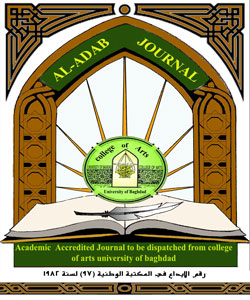Woman in life and writings Sadegh Hedayat
DOI:
https://doi.org/10.31973/aj.v0i133.917Keywords:
Hedayat, symbolism, female, misery, belief, poetryAbstract
The personal life of Sadegh Hedayat was a special life, only a few people knew about this side of the life. It was said that when he reached Paris just a few months before he committed suicide he was already desperate, miserable and extremely hopeless. He showed no signs of interest in life. In most of his works, he expresses strange and sad sides in the relationships between man and woman; in which he had no influence over.
His female casts where always imprison by their sexual desires, this is not only the case in his novel (The Woman That Lost Her Husband) but was also obvious in his other works, it is as if the character in his novels represent himself, because he was not very successful in his relationships with women. in his world he expresses that (he wishes for women to come to him) but because of his shyness and pride he did not allow himself to approach them and be rejected.
Downloads
References
Ajend, Adabeyat Nueen Iran, Translated & Prepared by Yaqoob Ajend.
Isti’lami, Mohammed, Barrasi Adabeyat Amrooz Iran, 5th ed., Ameer Kabeer Publishing House, Tehran, 2536 (Royal Calendar).
Dastagheeb, Abdul-Ali, Naqd wa Barrasi Aathar, Sadeq Hedayat, Tabesh Publishing House, Tehran.
Sejanlo, Nawisandigan Peshro Iran.
Shafaq, Tareekh Adabeyat Iran, vol. 4.
Safa, Thabeehullah Safa, Mukhtasar Tareekh wa Tahawul Nadhm wa Nathr Farsi, 5th ed., Tehran, June, 1950.
Qaimaqamiyan, Darbarah Sadeq Hedayat, 3rd ed., Kawiyani, Tehran, 1984.
Hedayat, Sa Qatra Khoon.
Downloads
Published
Issue
Section
License
Copyright and Licensing:
For all articles published in Al-Adab journal, copyright is retained by the authors. Articles are licensed under an open access Creative Commons CC BY 4.0 license, meaning that anyone may download and read the paper for free. In addition, the article may be reused and quoted provided that the original published version is cited. These conditions allow for maximum use and exposure of the work.
Reproducing Published Material from other Publishers: It is absolutely essential that authors obtain permission to reproduce any published material (figures, schemes, tables or any extract of a text) which does not fall into the public domain, or for which they do not hold the copyright. Permission should be requested by the authors from the copyrightholder (usually the Publisher, please refer to the imprint of the individual publications to identify the copyrightholder).
Permission is required for: Your own works published by other Publishers and for which you did not retain copyright.
Substantial extracts from anyones' works or a series of works.
Use of Tables, Graphs, Charts, Schemes and Artworks if they are unaltered or slightly modified.
Photographs for which you do not hold copyright.
Permission is not required for: Reconstruction of your own table with data already published elsewhere. Please notice that in this case you must cite the source of the data in the form of either "Data from..." or "Adapted from...".
Reasonably short quotes are considered fair use and therefore do not require permission.
Graphs, Charts, Schemes and Artworks that are completely redrawn by the authors and significantly changed beyond recognition do not require permission.
Obtaining Permission
In order to avoid unnecessary delays in the publication process, you should start obtaining permissions as early as possible. If in any doubt about the copyright, apply for permission. Al-Adab Journal cannot publish material from other publications without permission.
The copyright holder may give you instructions on the form of acknowledgement to be followed; otherwise follow the style: "Reproduced with permission from [author], [book/journal title]; published by [publisher], [year].' at the end of the caption of the Table, Figure or Scheme.











